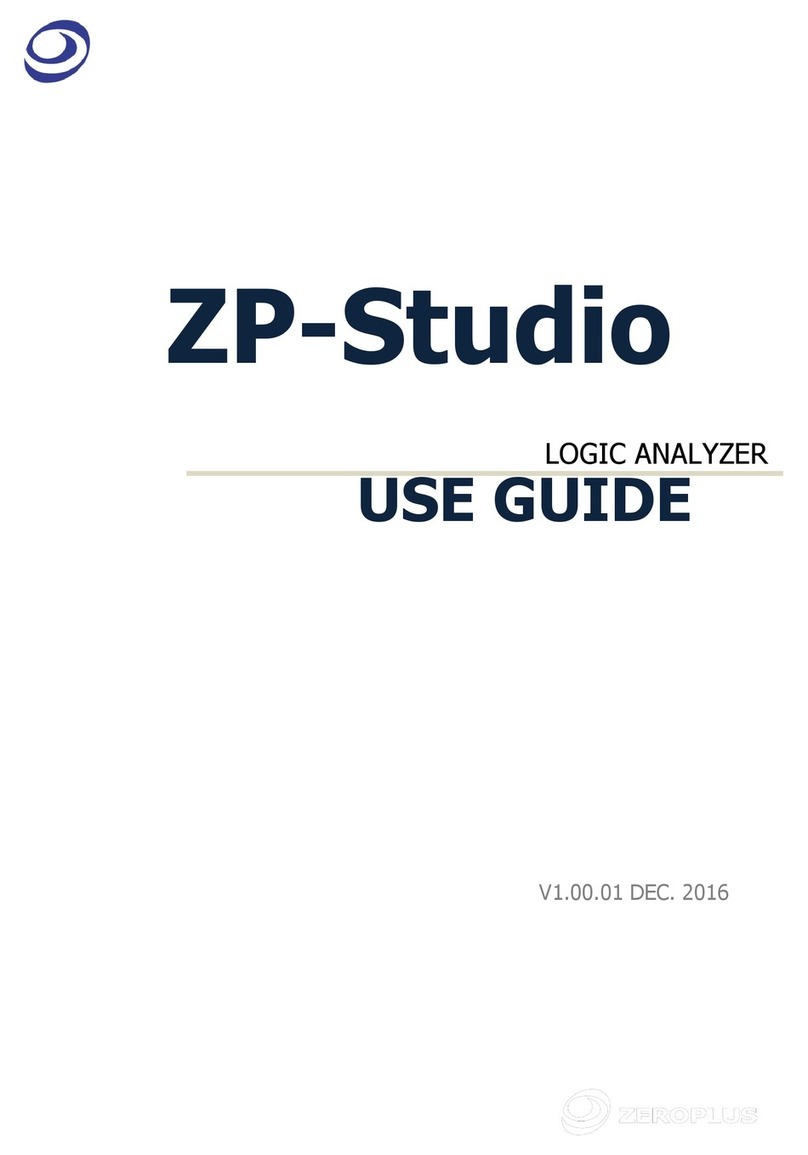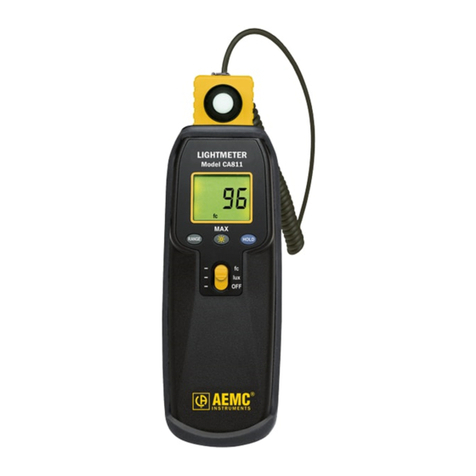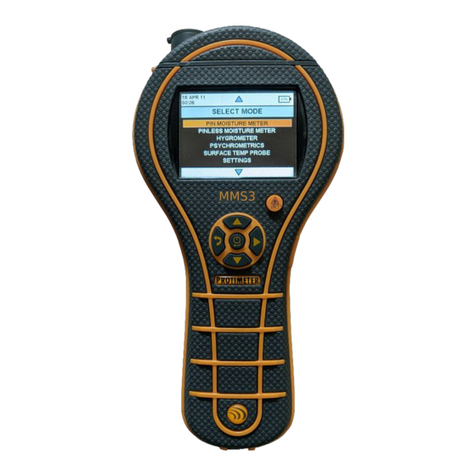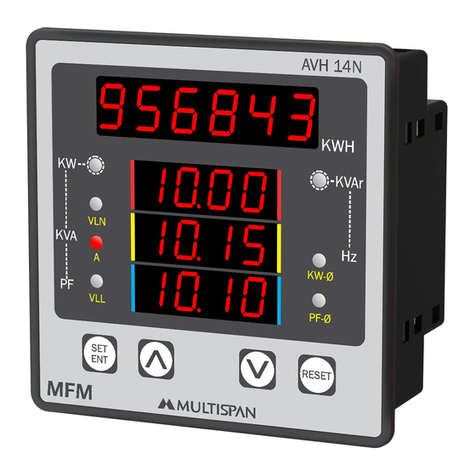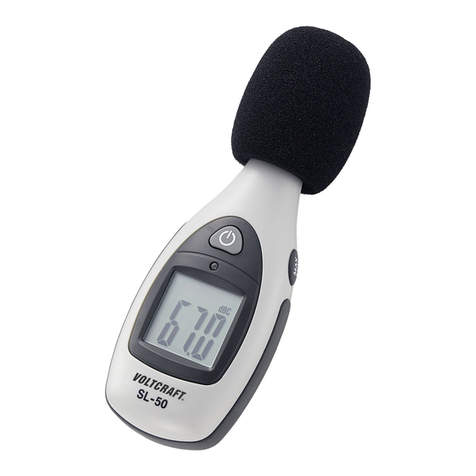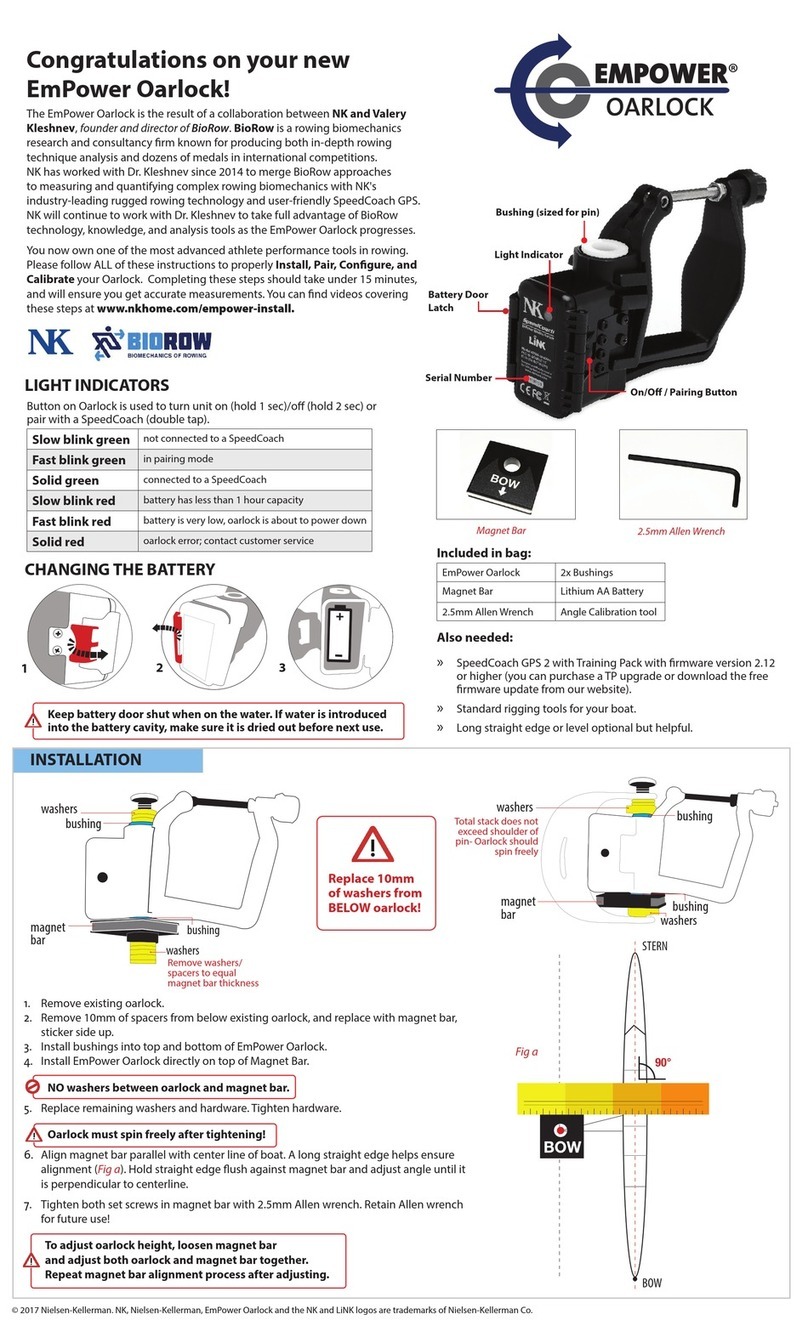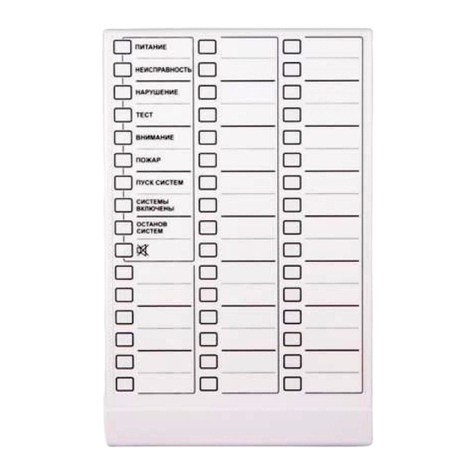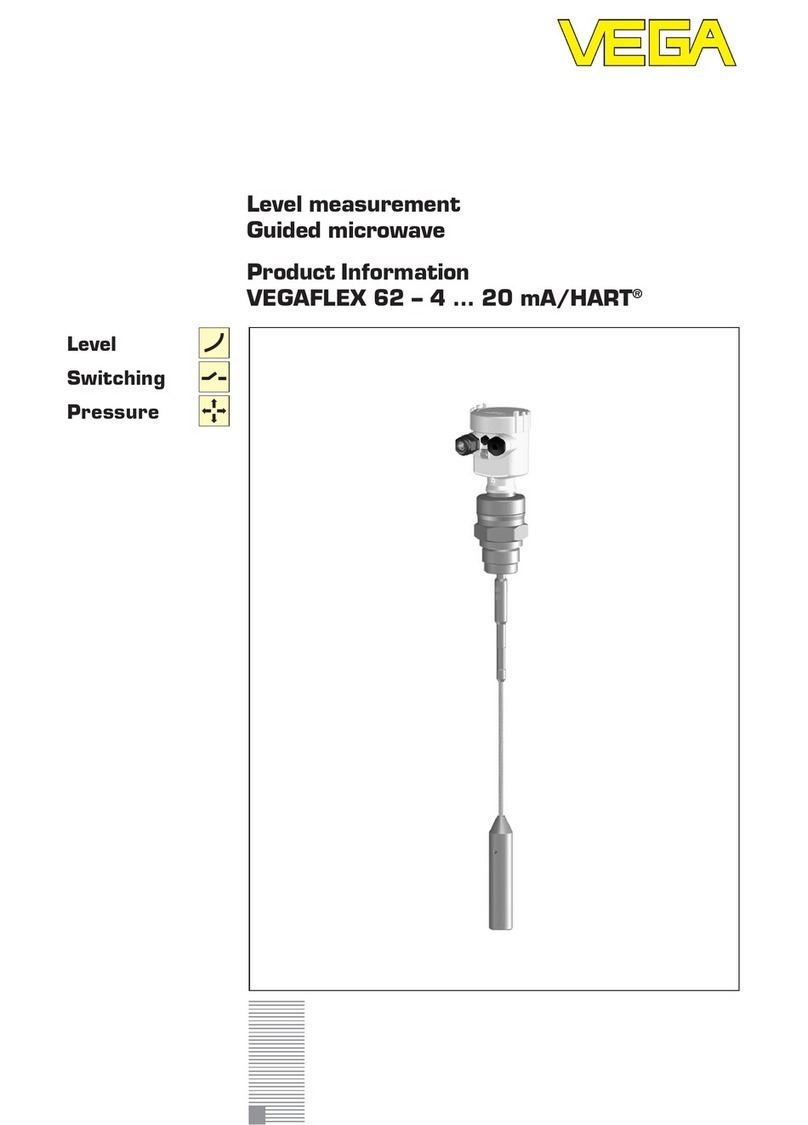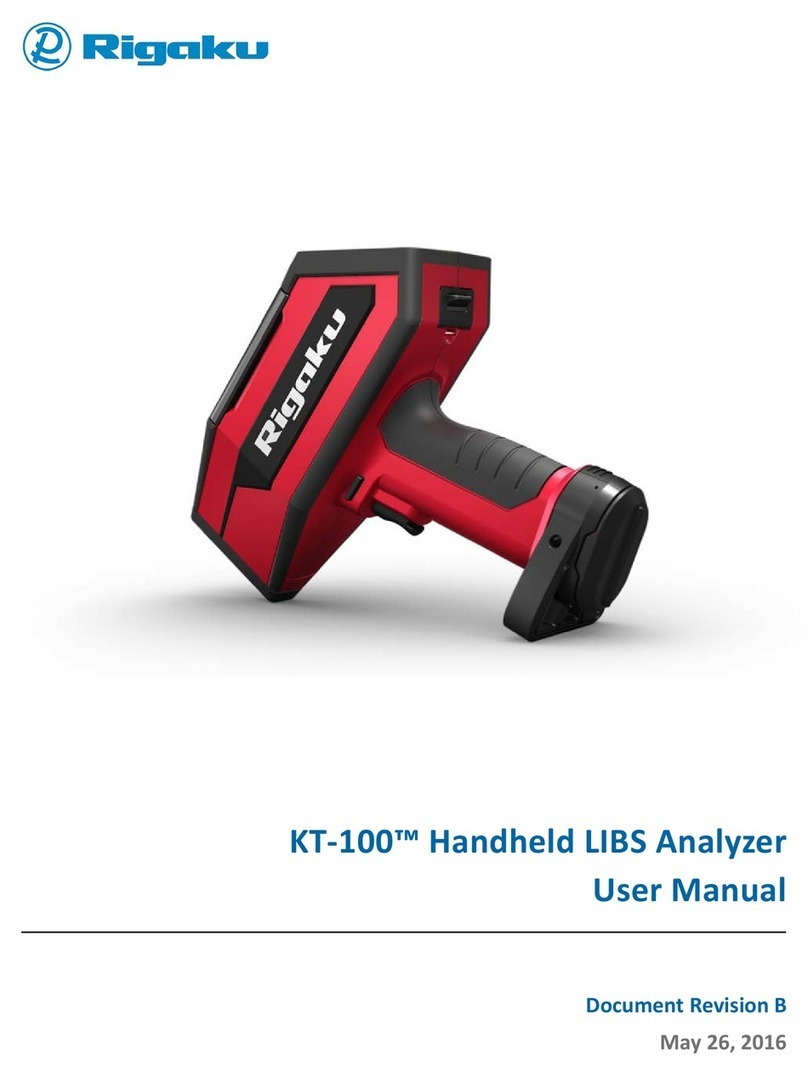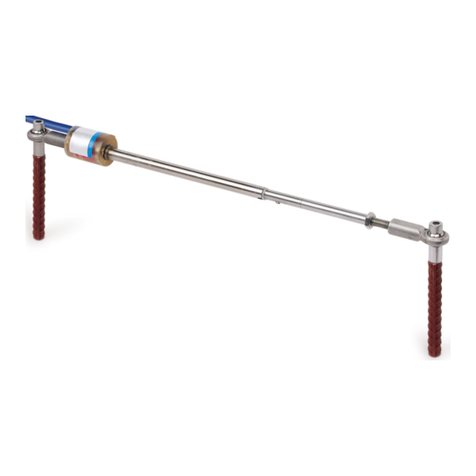kruss BP50 User manual

Bubble Pressure Tensiometer BP50
User Manual
V1-04
© KRÜSS GmbH, Hamburg 2012-2014


Contents page 1
Contents
1General information.................................................................................................................3
1.1 General safety information....................................................................................................................3
1.2 Intended use and application restrictions.......................................................................................3
1.3 Opening the transport packing and checking the scope of supply ......................................4
1.4 Procedure if repairs should be necessary........................................................................................4
1.5 Reference to other manuals..................................................................................................................5
1.6 Technical customer service....................................................................................................................5
2Introduction.................................................................................................................................6
2.1 Possible uses of the BP50 ......................................................................................................................6
2.2 Measuring principle .................................................................................................................................6
3Operating the BP50..................................................................................................................7
3.1 Controls ........................................................................................................................................................7
3.1.1 Overview................................................................................................................................................7
3.1.2 The control panel...............................................................................................................................8
3.2 Connecting the instrument ...................................................................................................................9
3.3 Fitting a capillary.......................................................................................................................................9
3.4 Switching the compressor on and off (for test purposes).........................................................9
3.5 Immersing the capillary ....................................................................................................................... 10
3.5.1 Manual mode ...................................................................................................................................10
3.5.2 Using a stand....................................................................................................................................10
3.6 Calibrating the instrument and the capillary............................................................................... 12
3.6.1 Calibration with LabDesk or the BP50.....................................................................................12
3.6.2 Reference liquid............................................................................................................................... 12
3.6.3 Carrying out a calibration with the BP50 ...............................................................................
13
3.6.4 Cancelling the calibration prematurely ..................................................................................13
3.7 Forcing out the liquid........................................................................................................................... 13
3.8 Carrying out a measurement.............................................................................................................13
4Cleaning and maintenance ................................................................................................ 14
4.1 Cleaning the sample vessel................................................................................................................14
4.1.1 Step 1: Cleaning with water ........................................................................................................14
4.1.2 Step 2: Check cleanliness.............................................................................................................14
4.1.3 Step 3 (if necessary): Scarfing..................................................................................................... 14
4.1.4 Step 4 (if necessary): Cleaning with oxidising acid............................................................. 15

page 2 Contents
4.2 Cleaning the surface of the BP50..................................................................................................... 15
5Firmware update..................................................................................................................... 16
Appendix.......................................................................................................................................... 19
ITechnical data.......................................................................................................................... 19
II Warranty and caveat emptor ............................................................................................ 19
III Copyright and right to make alterations...................................................................... 19

General information page 3
1General information
1.1 General safety information
SPAC S PA C SPAC SPAC
As well as this general safety information, please follow the safety instructions
in the remainder of the manual text.
SPAC S PA C SPAC SPAC
If the BP50 and its accessories are not used in accordance with this manual, the
effectiveness of safety measures provided can be impaired.
SPAC S PA C SPAC SPAC
The BP50 may only be used by trained personnel.
SPAC S PA C SPAC SPAC
When carrying out measurements with hazardous substances the safety
regulations and, if available, information in the appropriate safety data sheets
must be taken into account when handling such substances.
SPAC S PA C SPAC SPAC
Do not use the BP50 in explosion-proof areas.
SPAC S PA C SPAC SPAC
The controls of the BP50 and a connected computer must not be operated
when wearing protective gloves, which have already been used for handling
hazardous materials.
SPAC S PA C SPAC SPAC
Do not use the BP50 if the unit is obviously damaged.
SPAC S PA C SPAC SPAC
1.2 Intended use and application restrictions
SPAC S PA C SPAC SPAC
The BP50 is intended exclusively for measuring the surface tension of liquids
using the bubble pressure method and for calibration of the capillaries used for
this method.
SPAC S PA C SPAC SPAC
Intended use includes the exclusive use of accessories supplied by KRÜSS or
substitutes with an identical design in the case of disposable accessories.
SPAC S PA C SPAC SPAC
The housing of the BP50 must not be opened by the user.
SPAC S PA C SPAC SPAC
The components of the BP50 (except the immersed components, i.e. the
capillary and the temperature sensor) are not resistant against acids, bases or
organic solvents. KRÜSS does not accept any guarantee for damage due to
escape or spillage of such liquids. The same applies to damage due to corrosive
vapours.
SPAC S PA C SPAC SPAC
The BP50 should not be used at ambient temperatures below 10°C and above
40°C and with air which contains condensate.
SPAC S PA C SPAC SPAC

page 4 General information
1.3 Opening the transport packing and checking the scope of supply
Open the transport packing. Check the BP50 and its accessories for damage
during shipment.
!
Please keep the transport packing material, at least the PE foam forms. The
transport packaging is required if the instrument has to be shipped for
reparation.
Use the delivery note provided to check if the supply is complete.
Please contact KRÜSS or your local dealer without delay if damage during
shipment occurred or if the supply is incomplete.
SPAC S PA C SPAC SPAC
1.4 Procedure if repairs should be necessary
Contact KRÜSS
Contact KRÜSS customer support.
If you did not obtain the measuring instrument directly from KRÜSS but
from a dealer, please contact your dealer first. He may be able to rectify the
damage. If not, contact KRÜSS customer support directly.
You will be given a repair number. Please quote this number in your covering
letter when you dispatch the unit.
Send us the measuring instrument or accessories
!
Do not dispatch the measuring instrument or accessories without consulting
KRÜSS customer support.
Components which are not directly affected by the damage may also have
to be sent with the unit. KRÜSS customer support will advise you on the
necessary scope of the shipment.
!
Remove liquids (e.g. samples, temperature control liquid) completely from the
instrument and the accessories.
!
Clean the unit or accessories before dispatch. This applies particularly if there is
contamination due to hazardous substances.

General information page 5
!
Use the original packaging to pack the instrument or accessories. If you no
longer have the original packaging, it must be ordered from KRÜSS at the
customer’s expense.
!
Pack all components separately which were packed separately when the unit
was supplied. Do not dispatch the unit in the assembled state.
!
If the instrument or accessories were provided with transportation locks, refit
these before shipping.
!
Use box-in-box packaging.
Our customer support department will be pleased to advise you regarding the
proper packaging.
SPAC S PA C SPAC SPAC
1.5 Reference to other manuals
The steps required for using the LabDesk software are described in the relevant
software manual.
SPAC S PA C SPAC SPAC
1.6 Technical customer service
If problems should occur when working with your KRÜSS product please consult
the technical customer support at KRÜSS GmbH. You can contact them at:
KRÜSS GmbH
Technical customer support
Tel: +49 040/514401-0
Fax: +49 040/514401-98
E-mail: info@kruss.de
SPAC S PA C SPAC SPAC

page 6 Introduction
2Introduction
SPAC S PA C SPAC SPAC
Dear KRÜSS GmbH Customer,
Thank you for purchasing the BP50 from KRÜSS.
Thanks to the simple handling of the unit, you will soon be carrying out your
measurements without any problems. However, we advise you to read this
documentation carefully before starting work and to follow the appropriate
information when installing the unit. As well as the instructions for use, you will also
find helpful information and tips, for example for the optimum preparation of a
measurement.
!
We strongly advise you not to carry out the installation and work without
consulting this manual.
This manual is subject to a permanent quality control. The current version of the
manual can always be acquired from the download section of our homepage
www.kruss.de.
SPAC S PA C SPAC SPAC
2.1 Possible uses of the BP50
The BP50 together with the software LabDesk gives you the following options:
SPAC S PA C SPAC SPAC
Measurement of dynamic surface tension as a function of surface age
Time-dependent measurement of dynamic surface tension at constant surface
age
Single measurement at constant surface age with quality evaluation of the
results in colour
SPAC S PA C SPAC SPAC
2.2 Measuring principle
Gas bubbles are produced in the liquid sample by means of a capillary which is
connected to a pressure sensor. To increase the size of such a bubble the pressure
must work against the surface tension of the liquid. The surface tension of the
liquid can be calculated from the maximum bubble pressure when the bubble is
formed.
The time from the beginning of the formation of the bubble to the time that the
maximum pressure is detected is the age of the surface. In the case of the BP50,
this surface age can be specified over a wide measuring range.
You will find further information on the measuring principle and the theory
behind the bubble pressure method in the LabDesk software manual.
SPAC S PA C SPAC SPAC

Operating the BP50 page 7
3Operating the BP50
When the operating steps described in this chapter have been completed,
measurements are carried out under software control.
For information on defining and carrying out measurements, please read the
LabDesk manual.
3.1 Controls
3.1.1 Overview
LED indicators
Intake opening with
air filter
Control keypad
Capillary holder with
capillary
Temperature
sensor
USB cable
(to computer)

page 8 Operating the BP50
3.1.2 The control panel
Keys
Key(s) Function
Switch compressor on / off
The BP50 is ready to use as soon as it is connected to
the switched-on computer. It is not necessary to press
the ON/OFF button to carry out a measurement or
calibration.
Force liquid out of the capillary.
Start calibration

Operating the BP50 page 9
LED indicators
LED indicator Meaning
Run Blue, continuous. Data being transmitted to LabDesk
(during a measurement or calibration via LabDesk).
Status
Green, flashing: The unit is waiting for measurable
bubbles.
Green, continuous: The unit has detected measurable
bubbles.
Red, continuous: Firmware update mode
(Chapter 5)
Cal Blue, continuous: Calibration has been started via the
BP50 or via LabDesk
3.2 Connecting the instrument
!
It is essential to install the USB driver before you connect the instrument to the
computer for the first time (LabDesk manual).
Connect the BP50 to a USB port on the computer.
3.3 Fitting a capillary
!
Wear disposable gloves so that the capillary does not become contaminated.
Fit the capillary to the capillary holder on the BP50 using slight pressure.
3.4 Switching the compressor on and off (for test purposes)
The compressor can be switched on to check the generation and detection of
bubbles.
Press the key.
The compressor will start. The instrument will wait for measurable bubbles.
Immerse the capillary in the liquid.
The Status indicator will illuminate continuously when measurable bubbles are
detected.
Switching off
Press the key once more.

page 10 Operating the BP50
3.5 Immersing the capillary
3.5.1 Manual mode
For small surface ages (up to approx. 1500 ms), the measurement can be carried
out manually.
!
Keep your hand as steady as possible during the measurement or calibration.
!
Make sure that the immersion depth of the capillary does not change
significantly during the measurement or calibration.
3.5.2 Using a stand
!
For surface ages > 1500 ms, the BP50 should be used with a stand.
Standard arm
1. Fix the arm to a laboratory stand using a stand clamp.
2. Fit the BP50 into the opening of the arm.
3. Place the sample vessel on a laboratory sample stage underneath the BP50.
4. Immerse the capillary by raising the sample stage.

Operating the BP50 page 11
Optional stand with lifting device
1. Loosen the fixing screw for the standard arm.
2. Feed the arm of the stand into the opening in the lifting device. Fix the arm with
the help of the fixing screw.
Area for placing the
sample vessel
Fixing screw for the
standard arm Opening for
standard arm
Scew for lifting and
lowering

page 12 Operating the BP50
3. Fit the BP50 into the opening of the arm.
4. Place the sample vessel in the recess on the base plate of the lifting device.
5. Immerse the capillary by lowering the lifting device with the help of the
adjusting screw.
SPAC S PA C SPAC SPAC
3.6 Calibrating the instrument and the capillary
When calibrating the instrument, the ratio between the measured bubble pressure
and the surface tension is determined using a reference liquid. The calibration must
be carried out for every new capillary.
Calibration can usually be carried out by means of a manual measurement.
3.6.1 Calibration with LabDesk or the BP50
A calibration with the help of the LabDesk software must be carried out for
every change in the surface tension of the reference liquid (LabDesk manual).
3.6.2 Reference liquid
A reference liquid with known surface tension is required for the calibration. As a
general rule water is used.
!
The surface tension of the reference liquid must be independent of the surface
age.
!
The water used must be free from surface-active substances. Do not use water,
which has been demineralised with an ion exchanger, for measurement or for
cleaning. This can be contaminated with surfactants.
SP AC SPAC SPAC SPA C

Operating the BP50 page 13
3.6.3 Carrying out a calibration with the BP50
Immerse the capillary in the reference liquid.
Press the key.
The calibration will start. A beep from the BP50 indicates that the calibration has
started.
Another beep will be heard after approx. 30 s. Calibration is now complete.
3.6.4 Cancelling the calibration prematurely
To cancel the calibration, press the key once more.
3.7 Forcing out the liquid
As a result of the capillary force there will be liquid in the capillary following a
measurement. This must be forced out by a stream of air before the next
measurement.
Press and hold the key.
The compressor will be switched on and will switch itself off after one second.
The liquid can also be purged automatically if the measurement is defined
accordingly in LabDesk (LabDesk manual).
3.8 Carrying out a measurement
1. Create a measurement with the required parameters as described in the
LabDesk manual.
2. Immerse the capillary in the reference liquid.
3. Run the measurement as described in the LabDesk manual.

page 14 Cleaning and maintenance
4Cleaning and maintenance
SPAC S PA C SPAC SPAC
4.1 Cleaning the sample vessel
The first two cleaning steps should also be carried out before a sample vessel is
used for the first time.
!
Do not use cleaning agents which contain surfactants (soap, rinsing agents) or
any alkaline cleaning agents.
!
Use only pure solvent and clean, lint-free cloths.
4.1.1 Step 1: Cleaning with water
Rinse out the sample vessel under hot flowing water, wiping it alternately with
paper.
Rinse the sample vessel with distilled water.
4.1.2 Step 2: Check cleanliness
Wipe out the sample vessel with moistened tissue paper.
If there is a squeaking sound when wiping, this indicates that the sample
vessel is mostly free of surfactant residues. Rinse the sample vessel again
with distilled water. Dry the sample vessel in a drying cabinet.
If the paper slides on the glass, there are surface-active substances on the
surface of the glass. In this case, carry out more intensive cleaning by
performing the step described below.
4.1.3 Step 3 (if necessary): Scarfing
Scarf the sample vessel with the flame of a Bunsen burner.
When scarfing use crucible tongs and wear fire-proof gloves.
Allow the glass to cool on a heat-resistant sheet before using it again.

Cleaning and maintenance page 15
WARNING
Risk of injury due to shattering glass
If the glass should shatter, slivers of glass may cause injury.
Scarf the glass slowly and evenly. Do not allow it to glow red-hot.
Allow the glass to cool before rinsing with water.
Wear sound laboratory clothing and safety goggles.
4.1.4 Step 4 (if necessary): Cleaning with oxidising acid
Only in the case of contamination which has not been removed using the
previous measures: Clean the glass with a concentrated oxidising acid.
This work must only be carried out by persons who are familiar with the
dangers involved when handling acids and who are familiar with the
necessary safety procedures. Acquaint yourself with the properties of the
substances used. Pay attention to the appropriate R and S phrases (safety
advice).
SPAC S PA C SPAC SPAC
4.2 Cleaning the surface of the BP50
Use soft cloths, which will not scratch the surface, for cleaning the BP50.
Clean the surface of the BP50 with pure water and a little rinsing agent if
necessary.
!
The surfaces of the BP50 can become dull due to contact with organic
solvents.
SPAC S PA C SPAC SPAC

page 16 Firmware update
5Firmware update
When a firmware update becomes available, this can be downloaded from our
website www.kruss.de and loaded onto the BP50.
SPAC S PA C SPAC SPAC
Downloading current firmware
1. Go to our website www.kruss.de. Click on Login.
2. Enter your Username and Password. Click on the button.
You should have received the user name and password by e-mail shortly
after delivery of the BP50.
3. Click on Download.

Firmware update page 17
4. Click on Software Updates.
5. Under BP50,download the ZIP archive with the filename that indicates the
highest firmware number.
6. Click on Log-Out.
SPAC S PA C SPAC SPAC
Uploading the firmware
1. Extract the downloaded archive into a local folder.
!
Do not use a network folder.
!
All files of the extracted archive must be in the same folder.
SPAC S PA C SPAC SPAC
2. Disconnect the BP50 from the computer.
3. Press and hold the key. Connect the BP50 to a USB port on the computer.
The Status indicator on the BP50 will illuminate red. The BP50 will be in the
firmware upload mode.
SPAC S PA C SPAC SPAC

page 18 Firmware update
4. Start the KrussUSBFirmwareUploader.exe program, which will be found
amongst the extracted files.
Under Device Status the display connected should appear.
5. Click on the folder icon. Open the folder in which the extracted files are located.
Select the file bp50_fw_xxx.bin.
xxxx stands for the version number of the firmware specified in the file
name.
6. Click on the Send Firmware button. The new firmware will be uploaded.
7. At the end of the process, the message update done will appear. The BP50 will
be restarted.
Table of contents
Other kruss Measuring Instrument manuals

kruss
kruss DR101-60 User manual
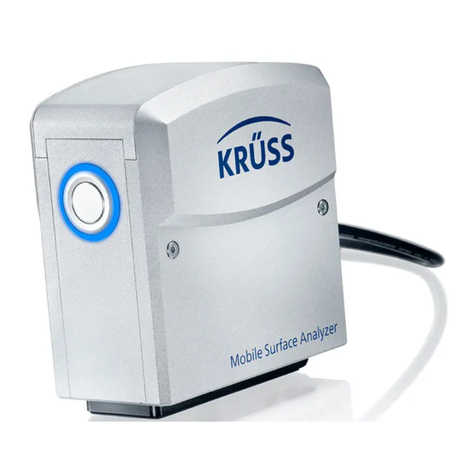
kruss
kruss Mobile Surface Analyzer User manual
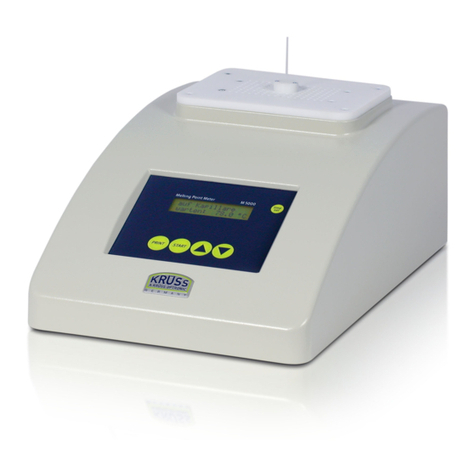
kruss
kruss M5000 User manual

kruss
kruss DR301-95 User manual

kruss
kruss DR201-95 User manual
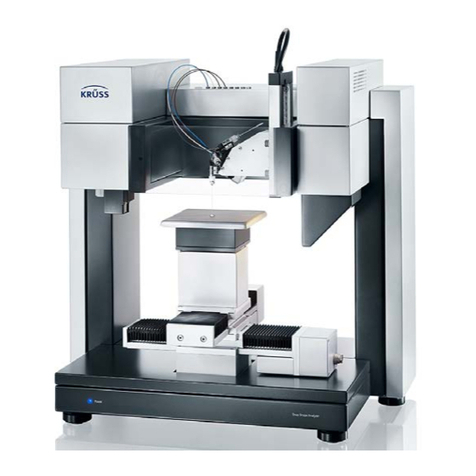
kruss
kruss DSA100 User manual

kruss
kruss M3000 User manual

kruss
kruss M5000 User manual
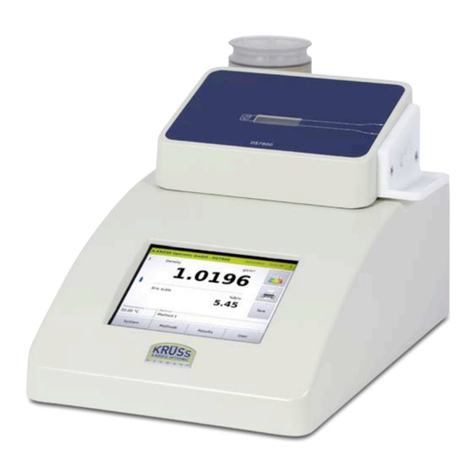
kruss
kruss DS7000 Series User manual
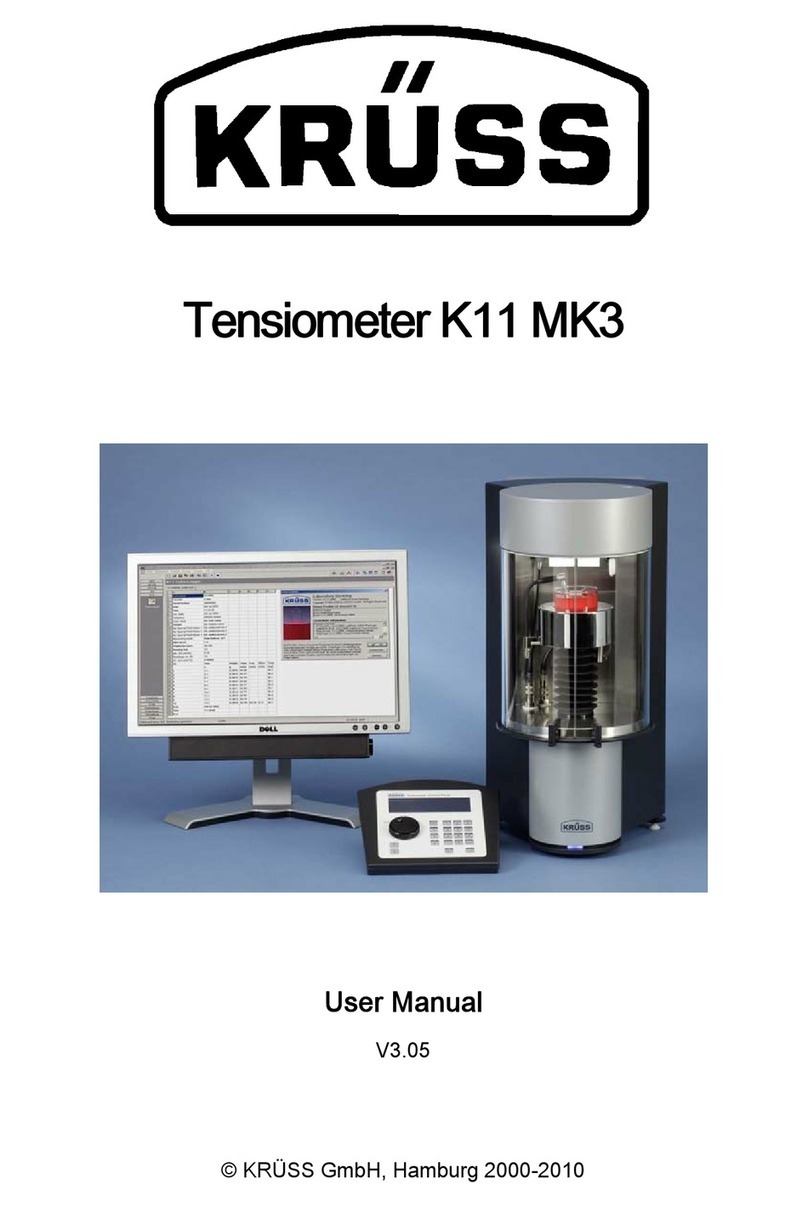
kruss
kruss K11 MK3 User manual
Popular Measuring Instrument manuals by other brands

PCB Piezotronics
PCB Piezotronics J356A03/NC Installation and operating manual
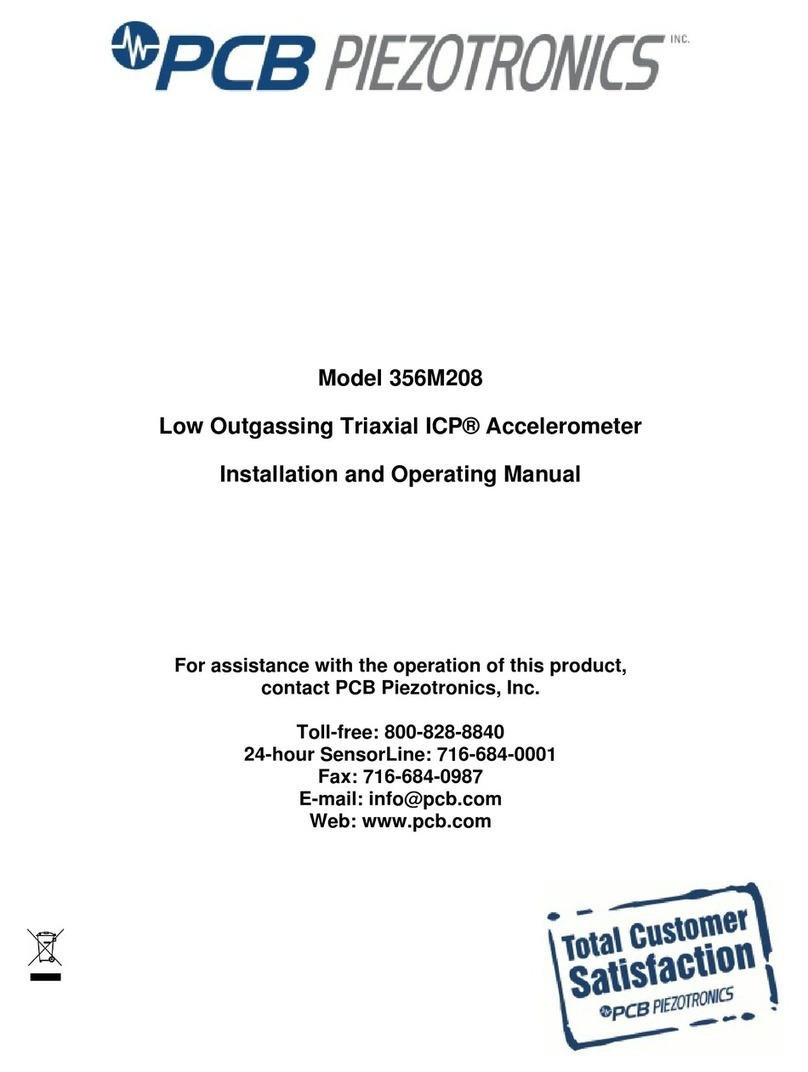
PCB Piezotronics
PCB Piezotronics 356M208 Installation and operating manual
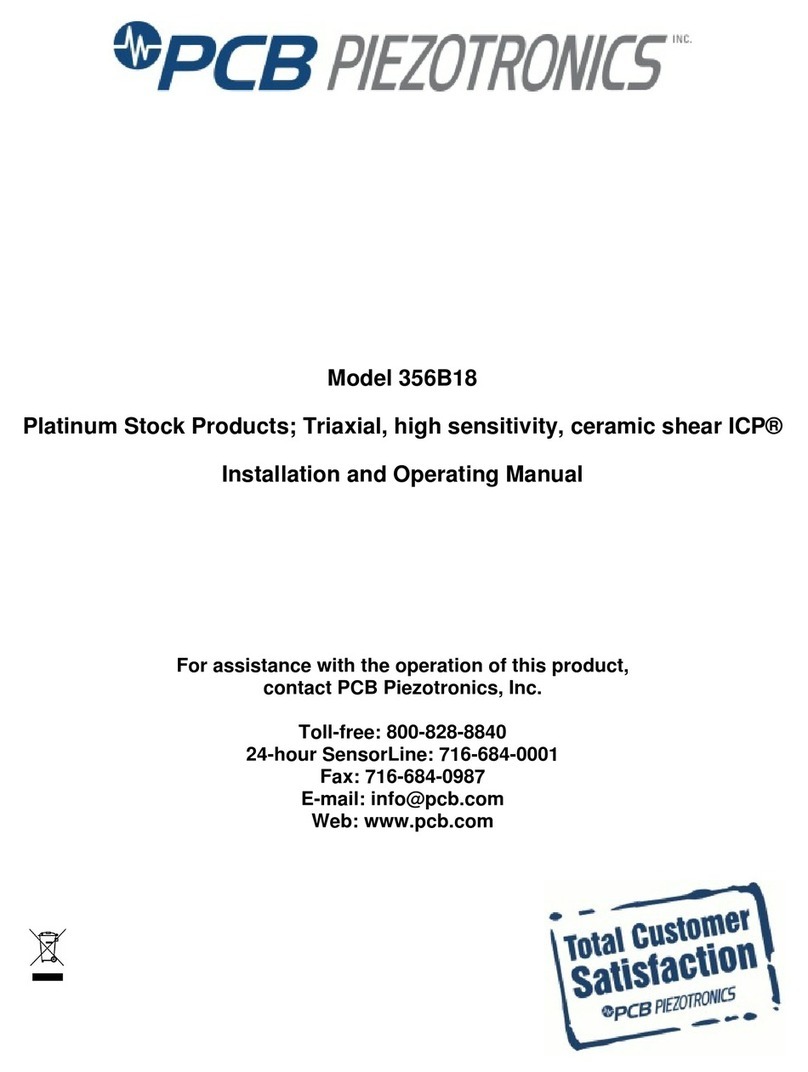
PCB Piezotronics
PCB Piezotronics 356B18 Installation and operating manual
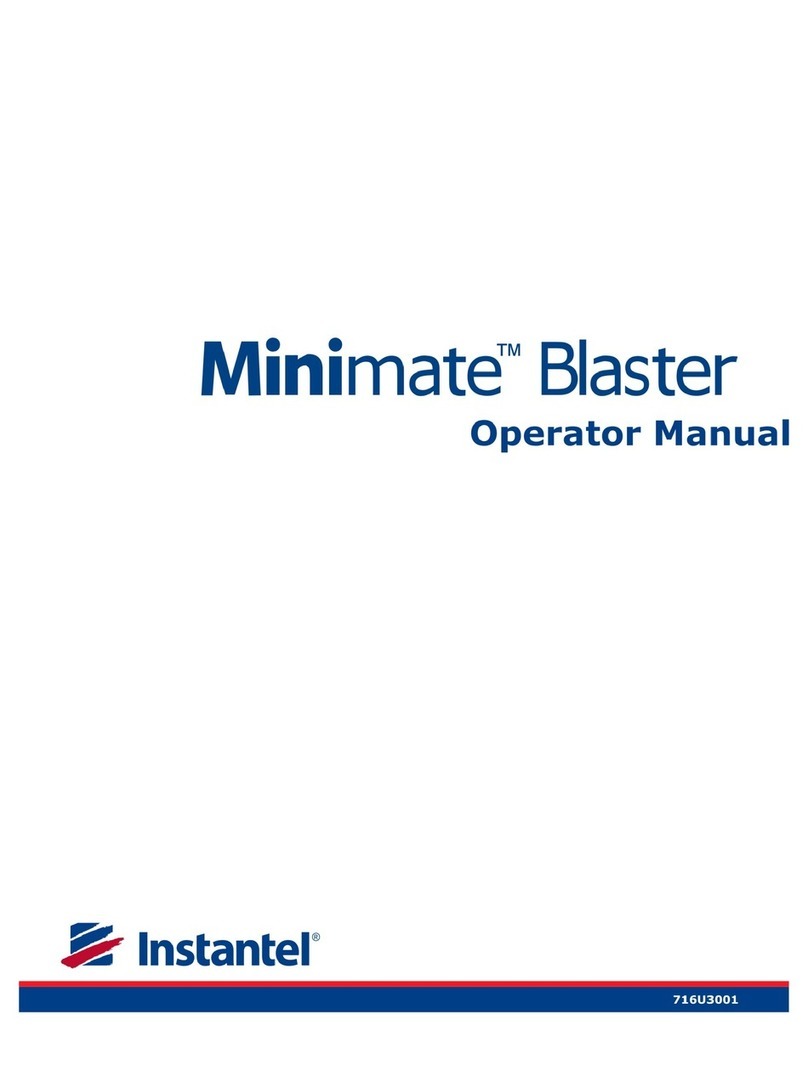
Instantel
Instantel Minimate Blaster Operator's manual
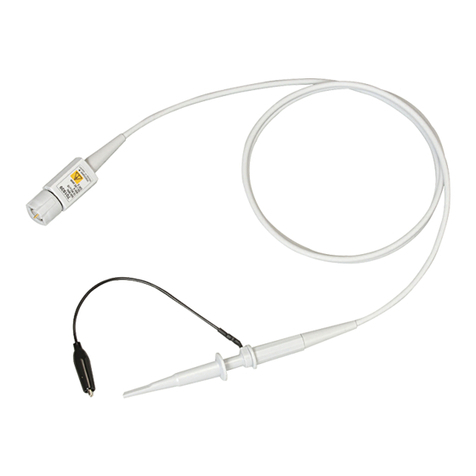
YOKOGAWA
YOKOGAWA 701938 user manual

Simmons
Simmons LRF 600 instruction manual


